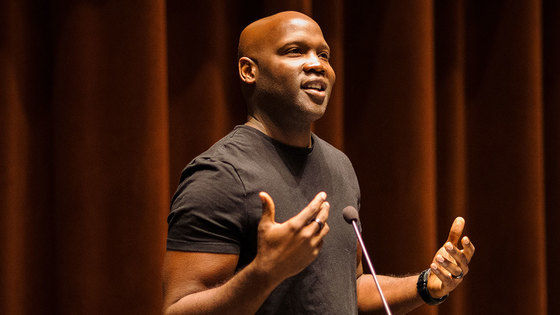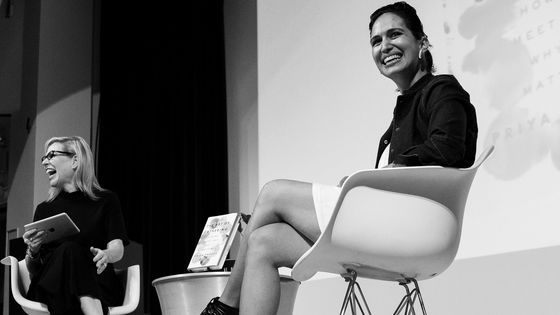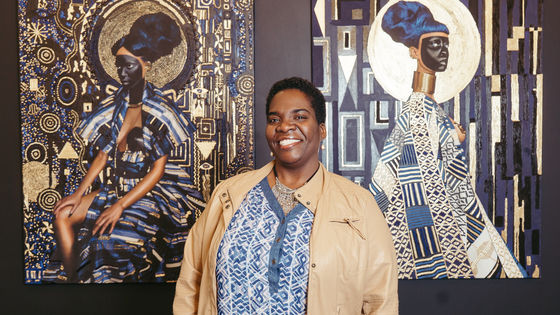This toolkit is a growing library of wisdom that highlights the hurdles of owning your content and building your platform. We not only curate the wisdom from creative leaders and artists, but also from the community—a balance of both, like cheese and wine—so that you’re supported and empowered to build your home on the internet.
Once considered an afterthought, an inclusive and diverse set of speakers, guests, and audiences can be at the core of your work—not because culture told you to, but because diversity is an enriching element for all endeavors.
There is a wave of change happening in industries around the world, and it’s a change that we can all support and push forward. By adding more seats at the table and uplifting voices that weren’t heard before, we allow ourselves to revel in the richness of diverse viewpoints and beliefs that stretch our understanding and the way we lead our lives.
Practical wisdom from like-minded creatives
Meet John Maeda, Global Head of Design at Automattic, and Kat Holmes, Director of User Experience Design at Google. She’s also the author of Mismatch: How Inclusion Shapes Design.
In Season 1 of Own Your Content, John and Kat talked honestly about the challenges of inclusivity and what organizations can improve upon.
Kat Holmes: “I don’t think we’re at a common understanding, yet. Inclusion means a lot of things to a lot of people. We need better language to describe different kinds of inclusion. We need specific methods for building and measuring it. There is a lot of work to do to make inclusion a repeatable practice, not just a nice idea.
“Success is when inclusive design is the default way to design any aspect of society. In 10 years, the urgency for inclusiveness in tech will be higher than ever. My hope is we’re prepared to meet those challenges with practical methods
[…]
“There are two approaches that I’ve seen work well. First, start with building diversity in the most senior leadership positions. People in positions of power can move culture more quickly. Second, focus on building inclusive customer experiences. We’re all here to build great products, regardless of our demographics. That’s core to many tech teams and a great way to guide everyone towards a more inclusive culture.”
Read John & Kat’s Own Your Content interview →
John Maeda: “It’s all about how we believe we define “better.” I like to think that “better” means succeeding in the marketplace at a scale that is hard to imagine. In the “hard to imagine” space lies the reason why diversity of talent creating content and products is so key — certain folks who have similar upbringings and social circles will at some point be unable to think outside of their box, because they’re all roughly the same person. Who do you trust more? Someone just like you? Or someone that isn’t like you? The answer is simple: we tend to like people who think like ourselves. And when we make content or products our immediate go-to instinct is to design for ourselves. But if our goal is to expand our market size, commonly called “Total Addressable Market” in business parlance as meaning the demographic range of your product or service, then the way to grow the TAM is to incorporate diversity into the content and product team. That helps to lower the difficulty of finding “hard to imagine” spaces because you are working with the people who live and work in those spaces that you can’t imagine, or empathize with, on your own. Inclusion is good business.
[…]
“It’s about hearing all of our voices — and a medium that enables inclusivity.”
Read Kat and John’s interview on how to design for inclusivity and ways to bake in this mindset into leadership positions.
Encouragement for next steps
Consider having deeper conversations with colleagues and friends in different communities to grow an understanding that informs your decision making process. It’s about being self-aware of cognitive biases (and learning about them), and actively challenging your processes to enable inclusivity naturally.
Additional Resources
How diversity in the lab helped scientists
“The people I collaborate with have backgrounds in electrophysiology, molecular biology, medicine and psychology. Our different scientific backgrounds and research topics and our different ethnicities and cultural upbringings push me outside of my comfort zone. I do not have to explore my basic assumptions when I’m around only people who share my background.”
How diversity makes us smarter
“Decades of research by organizational scientists, psychologists, sociologists, economists and demographers show that socially diverse groups (that is, those with a diversity of race, ethnicity, gender and sexual orientation) are more innovative than homogeneous groups.”
eBay’s first chief diversity officer on humanizing diversity and inclusion
“Oftentimes, this conversation narrows to be about only race and gender. While, yes, race and gender are very important aspects, diversity goes well beyond them. It absolutely should include them, but goes even further into hundreds of attributes.”
Automattic’s inclusive design checklist
a thoughtful and meticulous checklist that ensures you’re asking yourself the hard questions, keeping yourself accountable, and taking action that champions inclusivity.
Ask the question: Who’s voice is missing?
Google’s director of UX design says the ability to seek out a range of perspectives is a critical skill for leaders of the future.
Related CreativeMornings Talks
Watch some of these featured talks on collaboration, and thousands more on creativemornings.com →
 |
Tim Allen on how inclusive design uses diversity to guide innovation. |
 |
Priya Parker on the art of gathering and setting clear intentions for why people get together. |
 |
Abadesi Osunsade on why we need to keep the tech world accountable in diversity and representation. |
 |
Ramona Lindsey, director of education at the Kentucky Museum of Art & Craft, shares how everyone deserves a seat at the table. |
 #OwnYourContent
#OwnYourContent
Share the project that you’re working on with #OwnYourContent and see what other creatives are saying about these topics.
Read more interviews and toolkits at ownyourcontent.wordpress.com.
Build your home. Own your content. Get 20% off your next WordPress.com site. An offer from our Global Partner WordPress.com for the CreativeMornings community.
Toolkit by Paul Jun. Illustrations by Jeffrey Phillips. ‘Own Your Content’ illustration by Annica Lydenberg.


okay cool 👓
LikeLiked by 3 people
Totally agree, diversity is core in idea creations.
LikeLiked by 4 people
Your blogs post are helpful for the reader. I totally agree with you we should respect diversity and understand people. Your idea of choosing the guest who actually respects others culture is an important aspect for the event and the audience. Well written blog.
LikeLiked by 4 people
Thankyou for sharing 👍
LikeLiked by 5 people